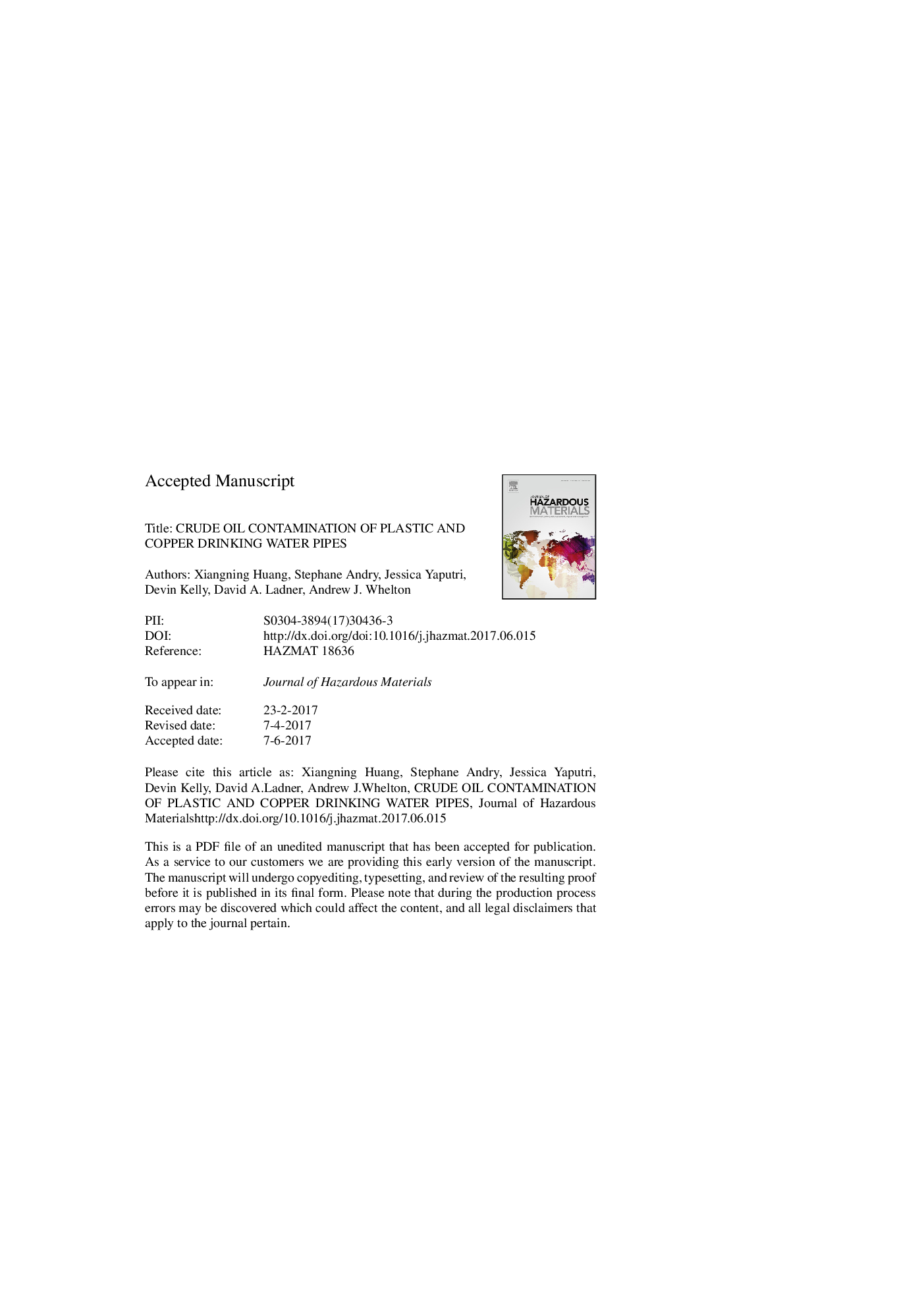| Article ID | Journal | Published Year | Pages | File Type |
|---|---|---|---|---|
| 4979359 | Journal of Hazardous Materials | 2017 | 34 Pages |
Abstract
This study was conducted to determine the susceptibility of plastic (i.e., PEX, HDPE and CPVC) and copper pipes to short-term contamination by crude oil. Pipes were exposed to highly and slightly contaminated drinking water for the typical duration of Do Not Use drinking water orders. PEX pipes sorbed and desorbed the greatest amount of monoaromatic hydrocarbons (MAHs), whereas copper pipes were less susceptible to contamination. For benzene, toluene, ethylbenzene, and xylenes (BTEX) quantified in water, only benzene exceeded its health based maximum contaminant level (MCL). The MCL was exceeded for copper pipe on day 3, for CPVC pipe through day 9, and PEX and HDPE pipes through day 15. The BTEX compound concentration in water after the pipes were returned to service depended on the initial crude oil concentration, material type, and exposure duration. Total organic carbon (TOC) measurement was not helpful in detecting oil contaminated water. Except BTEX, trimethylbenzene isomers and a couple of polycyclic aromatic hydrocarbons (PAHs) with and without MCLs were also detected desorbing from PEX-A pipe. Oil contaminated water must be thoroughly characterized and pipe type will influence the ability of drinking water levels to return to safe limits.
Related Topics
Physical Sciences and Engineering
Chemical Engineering
Chemical Health and Safety
Authors
Xiangning Huang, Stephane Andry, Jessica Yaputri, Devin Kelly, David A. Ladner, Andrew J. Whelton,
